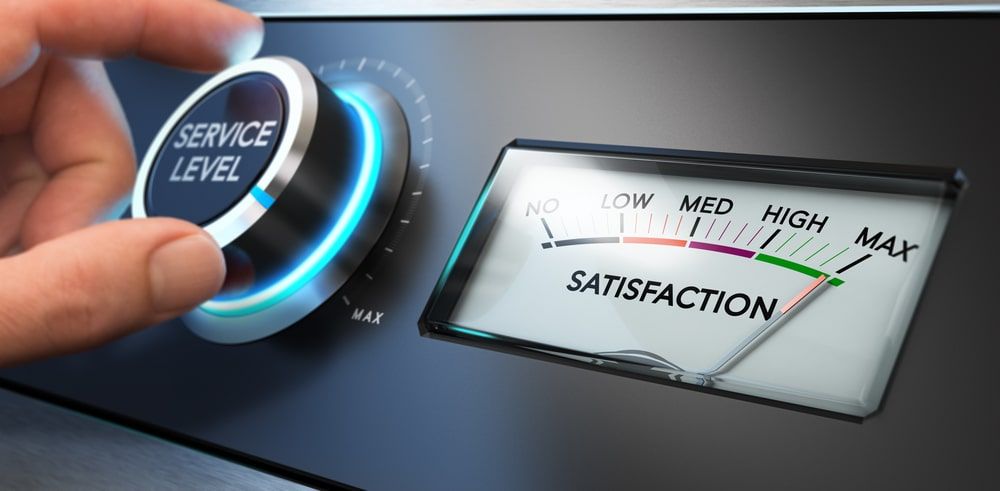The 2021 E-Rate Changes That Could Cause You to Miss Out on Funding
E-rate funding is changing with the start of the 2021 funding cycle. Is your school district still prepared to secure vital funds in the face of...
4 min read
Tony Ridzyowski : Jan 29, 2021 3:08:30 PM

With the E-rate filing window now open, it’s important to understand exactly what you can and cannot use funds for. Here’s what you might be overlooking.
The importance of internet access and technology in learning environments is constantly growing — but the cost of maintaining that access is growing too. For many K-12 school districts and libraries, these costs can quickly become overwhelming. Fortunately, it’s possible to get help covering those costs thanks to the Federal Communications Commission’s (FCC) E-rate funding program, which is designed to help institutions attain affordable internet access and telecommunications services.
There are a number of reasons why it’s important for academic institutions to understand (and make the most of) their potential E-rate funding. At the most basic level, district constituents have already helped pay for the funding via taxes on their phone bills — meaning that if institutions don’t take advantage of the available funding, that money will be wasted. More importantly, E-rate funding, when used effectively, offers great opportunities for schools and libraries to improve the quality of education they can offer through increased digital connectivity.
While many institutions appreciate the support they get from E-rate, a large number still overlook some of the ways they could be using funding simply because they don’t realize certain costs and investments qualify. To make the most of E-rate funding now and into the future, qualifying organizations should make sure they understand all the ways they can use E-rate.
As a refresher, “E-rate” is the more common name for the Universal Service Schools and Libraries Program, a government-funded discount program designed to help schools and libraries attain affordable internet access to enable digital learning. There are two different E-rate funding groups: Category One, which covers services that provide the basic conduit access to the internet, and Category Two, which is focused on services and products needed to enable high-speed broadband connectivity and broadband internal connections.
Between these two categories, there’s a lot that institutions can utilize E-rate funds for. Items that are commonly funded by E-rate include routers, switches, wireless access points, and even cabling. However, applying for E-rate funding is complex, and there are a number of common misconceptions around eligible institutions and coverage. To ensure that you’re not missing out on accessing funds or getting coverage for your equipment, here are a few key ways of utilizing E-rate that many people often forget.
When people think about E-rate they have a tendency to focus on public schools and the most obvious ways of using the funding within each category. While there’s nothing technically incorrect about thinking that way, it may mean you’re missing out on some of the ways you could be utilizing E-rate funds. Here are four of the most common things institutions miss when navigating E-rate funding:
When it comes to categorizing purchases in E-rate funding requests, institutions may be underutilizing funding due to a lack of understanding of what can be covered within each category. According to the official Eligible Services List for E-rate, any equipment that connects to a Category Two-eligible local access network (LAN) but is necessary to make a Category One broadband service functional can actually qualify for Category One funding.
That means that the price of any components that enable your Category One service—even if they’re connected to a Category Two LAN—can be allocated into your Category One funding request, which may leave you with some more wiggle room in your Category Two requests.
While E-rate is more commonly associated with public schools, it’s important to remember that funding is also available to any non-profit institutional day or residential school. That includes non-profit private schools and charter schools, many of which may be able to benefit from E-rate funding just as much as their standard public counterparts. A partner with experience navigating E-rate can help you understand your eligibility and work with you through the application process to help ensure you aren’t leaving money on the table.
While people usually talk about E-rate in terms of individual schools, it’s worth noting that libraries are also eligible. Eligible libraries include public elementary or secondary school libraries, academic libraries, and research libraries. At a time when libraries are about so much more than physical materials, E-rate funding has the potential to have a transformative impact in helping libraries increase the accessibility of their resources and the support and services they can offer their patrons.
We often think we have to do everything on our own — but when it comes to E-rate, that doesn’t have to be the case. If you want to team up with other institutions to apply for funding together, you can by joining a consortium. The USAC defines consortiums as “A group of E-rate eligible entities that seeks competitive bids or E-rate funding for eligible services on behalf of its members.” Schools and libraries can form consortia with the goal of aggregating demand, lowering prices, and promoting the use of shared facilities.
There’s no denying that utilizing E-rate funds is complicated. But as the reliance on digital connectivity in education grows, getting and using these funds effectively is only going to become more important — and more challenging.
The best way to ensure your district is maximizing its E-rate funding is to work with a trusted partner who can help you navigate the complex funding system and create a plan to use your funds effectively. When you partner with Turn-key Technologies, Inc. (TTI), that’s exactly what you get. With three decades of IT experience and a long list of education partnerships, our experts can help take full advantage of E-rate funding to ensure you aren’t overlooking any possible uses.
To learn more about how TTI can help you secure and leverage E-rate funds to power cutting-edge education and technology in your district, contact us today.

E-rate funding is changing with the start of the 2021 funding cycle. Is your school district still prepared to secure vital funds in the face of...

When it comes to managed services, your provider can make all the difference. If you want a provider that goes above and beyond, look no further than...

No one knows what the future of education holds — but upgrading to WiFi 6 can help school districts be prepared for whatever comes next. The world is...